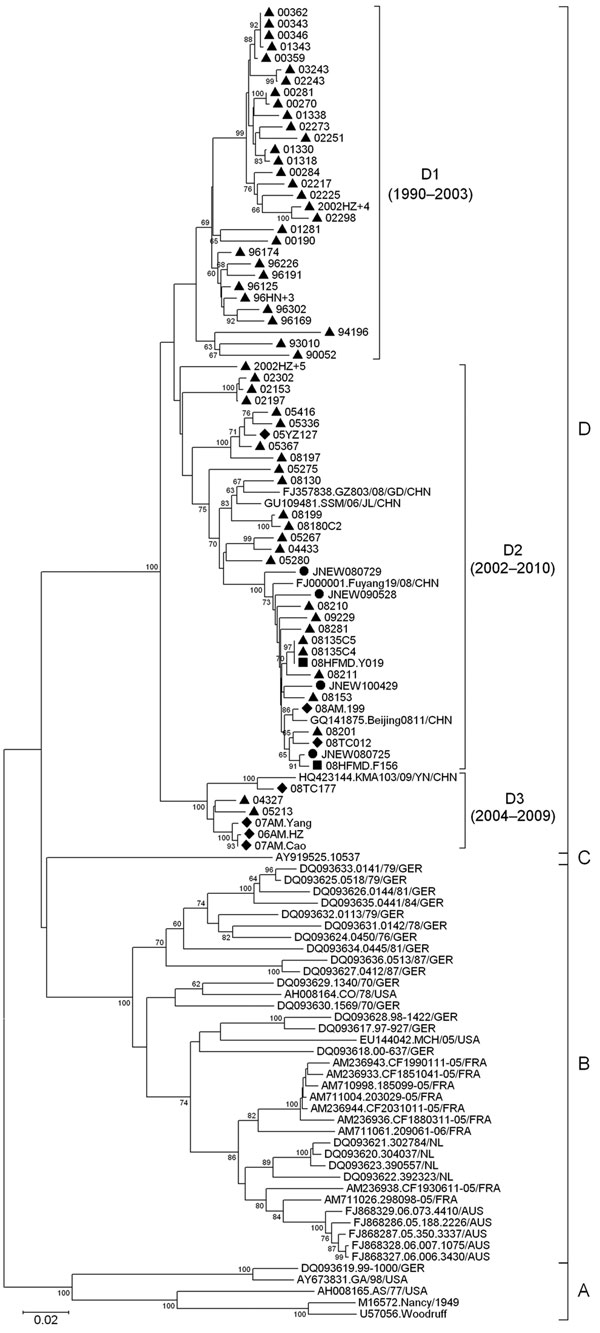Volume 18, Number 11—November 2012
Dispatch
Coxsackievirus B3, Shandong Province, China, 1990–2010
Figure 2

Figure 2. . . Phylogenetic tree based on the alignment of the entire virus capsid protein 1 coding regions of coxsackievirus B3 isolates from Shandong, People’s Republic of China, and around the world. Triangles indicate isolates from patients with acute flaccid paralysis; diamonds indicate isolates from patients with aseptic meningitis; circles indicate isolates from the Shandong environment; and squares indicate isolates from patients with hand-foot-and-mouth disease; the arrow indicates the representative strain 2008TC012 from the aseptic meningitis outbreak in 2008. Strain 26362/08 from patients with aseptic meningitis in Hong Kong is not shown in the tree because only part of the virus capsid protein 1 sequence was available. AUS, Australia; CHN, China; FRA, France; GER, Germany; NL, the Netherlands; USA, United States. Scale bar indicates nucleotide substitutions per site.
1These authors contributed equally to this article.